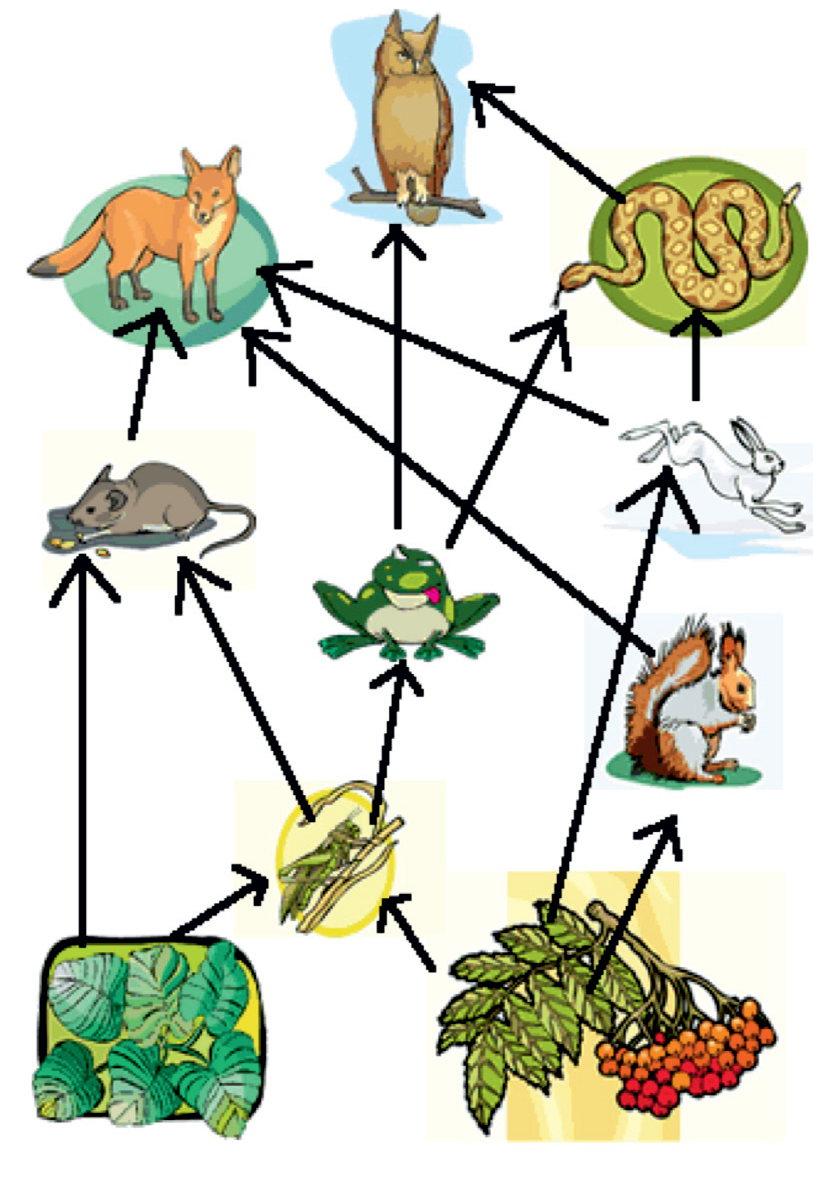The Food Chain
Every living thing needs energy in order to live. Every time animals do something (run or jump) they use energy. Nothing can live without energy. We get energy from the food we eat, and all living things get energy from food. Plants use sunlight, water and nutrients to get energy in a process called photosynthesis.
A food chain shows how each living thing gets food, and how nutrients and energy are passed from creature to creature. Food chains begin with plant-life (producer), and end with animal-life (consumer). Animals that eat plants are called herbivores, animals that eat meat but don’t eat any plants are called carnivores, and those that eat some plants and some animals are called omnivores.
A simple food chain could begin with some grass, which is then eaten by a rabbit. Then the rabbit is eaten by a fox. After the fox dies, funghi (like mushrooms) and other decomposers break down the dead animal and turn it into nutrients, which are released into the soil. The nutrients (plus sun and water) then cause the grass to grow. It's a full circle of energy.
There can be many links in food chains but if there are too many links, the animal at the end of the food chain will not get enough energy. Most animals are part of many different food chains because they eat more than one type of food for their energy needs. All of these food chains form a complex food web.
Humans are at the centre of a very complex food web because we tend to eat many different types of plants and animals. The only creatures who might snack on a human are large predators, such as sharks. However, it’s very rare for humans to be eaten by predators. Most predators have more to fear from humans than we have to fear from them!

